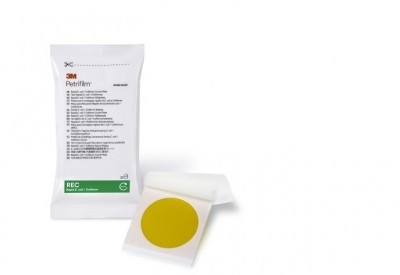Neogen launches microbial test for EU market

NeoFilm tests are available for coliform, E. coli/coliform, aerobic counts, yeast and mould and each test has been validated through the AOAC Research Institute.
The test system for microbial counts was introduced in the US in late 2013 but the firm said improvements have been made to test procedure to improve robustness and convenience.
Different performing approach
Joanne McPeake, marketing manager at Neogen Europe, said in both markets the testing is widely used to measure microbial load of the different food products but some differences exist.
“Generally speaking the main difference is related to the way each market performs the tests,” she told FoodQualityNews.
“NeoFilm and similar products will be incubated at different temperatures in EU compared to US, for instance, when analysing Total Viable Count and Coliforms.
“In addition, a kit that is approved for one food product in US may not be approved for the same food in EU, but for a different one.
“Lastly, when results are obtained with these types of kits, the interpretation may differ. The same contamination level may mean that the product cannot be commercialised in US but it may be acceptable in EU, or vice-versa (due to different legislation).”
NeoFilm tests detect and quantify microbiological organisms in environmental samples, process materials and finished products.
Diluted samples are inoculated onto thin films, incubated, and then any colonies are counted.
Microbial testing challenges
McPeake said industry faces several challenges when it comes to microbial testing including trying to recover and detect all microorganisms which may survive a food preservation treatment, in the shortest possible time.
This includes parasites, bacteria, yeast and moulds and food viruses, she said.
“Traditional (official) methods are good (when looking to comply with the legislation), but usually they are not fast or sensitive enough for the new market requirements.
“Thus, food companies have to conduct a Risk Assessment to identify which microorganisms might be of concern (ranking them), invest in new techniques and instruments to detect them (according to the food they are producing) and validate (compare to official methods).
“All of this guarantees that both supermarkets and consumers will be happy with their products and with the time of delivery.
“They have to find the perfect equilibrium between the time needed to obtain the results, the limit of detection of the technique, their stock capacity, money investment and what the market is looking for.”
The AOAC validated NeoFilm for Yeast and Mould in December last year.
It was compared to the Food and Drug Administration’s (FDA’s) Bacteriological Analytical Manual (BAM) reference culture procedure for its ability to detect yeasts and moulds in breaded chicken nuggets, dry pet food, orange juice concentrate, yogurt and cake mix.
Results of the internal and independent laboratory studies demonstrate the method was effective for enumeration of yeasts and moulds in the food matrices tested, said Neogen.
























